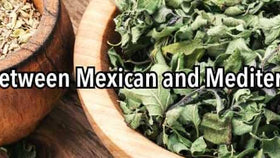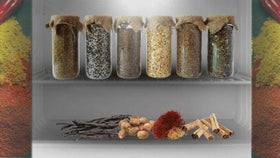Where does artificial vanilla come from?
Artificial vanilla is essentially an imposter flavoring that has found its way into countless recipes and products. While many folks add it to their recipes as a means of capturing that classically adored vanilla flavor, any true vanilla connoisseur can tell the difference immediately. That’s because imitation vanilla, having come from non-vanilla sources, presents a stark difference in quality compared to natural vanilla products, such as pure vanilla extract, vanilla paste, and vanilla beans . But where exactly does artificial vanilla come from? Read on to find out.
The Truth Behind the Origins of Artificial Vanilla
Synthetic Vanillin
Synthetic isn’t exactly a word that gets the saliva glands flowing or the stomach growling. Sadly, it’s a word that is presented in ingredient lists far too often, and imitation vanilla extract is no different. The most common form of artificial vanilla is made using synthetic vanillin. While vanillin is a compound found naturally in vanilla beans, that is not where it comes from in the case of artificial vanilla flavorings. Instead, vanillin is concocted in a lab using compounds derived of petrochemicals and/or a bi-product of wood pulp, called lignin. Imagine if they referred to literal ingredients when presenting food using synthesized ingredients—petrochemical ice cream sundae, topped with a dollop of wood pulp bi-product whipped cream coming right up.
Beaver Secretions
We couldn’t discuss artificial vanilla without mentioning the use of castoreum, a secretion sourced from beaver glands. Historically, castoreum, which has a vanilla-like scent, was utilized to create a form of imitation vanilla flavor and aroma (it was also used in the fragrance industry). However, this is not typically the case today. Not only does it not make financial sense to obtain only small amounts of castoreum at a time, but it is highly regulated and you’d be hard-pressed to find vanilla flavoring made from castoreum today. Beaver secretion crème brûlée, anyone?
Tonka Bean Extract
Often marketed as Mexican Vanilla, this particular “vanilla” extract does not come from vanilla beans at all (despite the fact that Mexico is the birthplace of the vanilla orchid). Instead, it is a sourced from the beans of the Tonka tree, a relative of a pea plant. The seeds are responsible for the output of flavor, owed largely to the high concentration of coumarin (coumarin is also found in smaller, acceptable amounts in cinnamon and cloves). Because coumarin can be a toxic compound if consumed in large amounts, tonka beans and products made from them are illegal in the US.
****







Slofoodgroup
Author